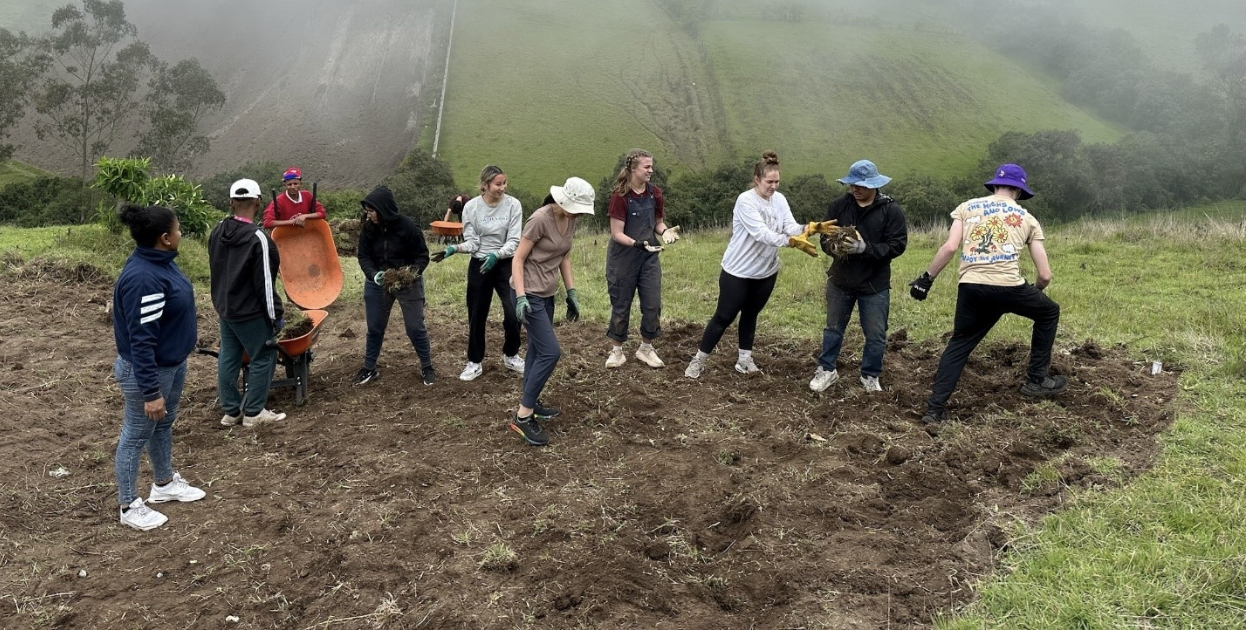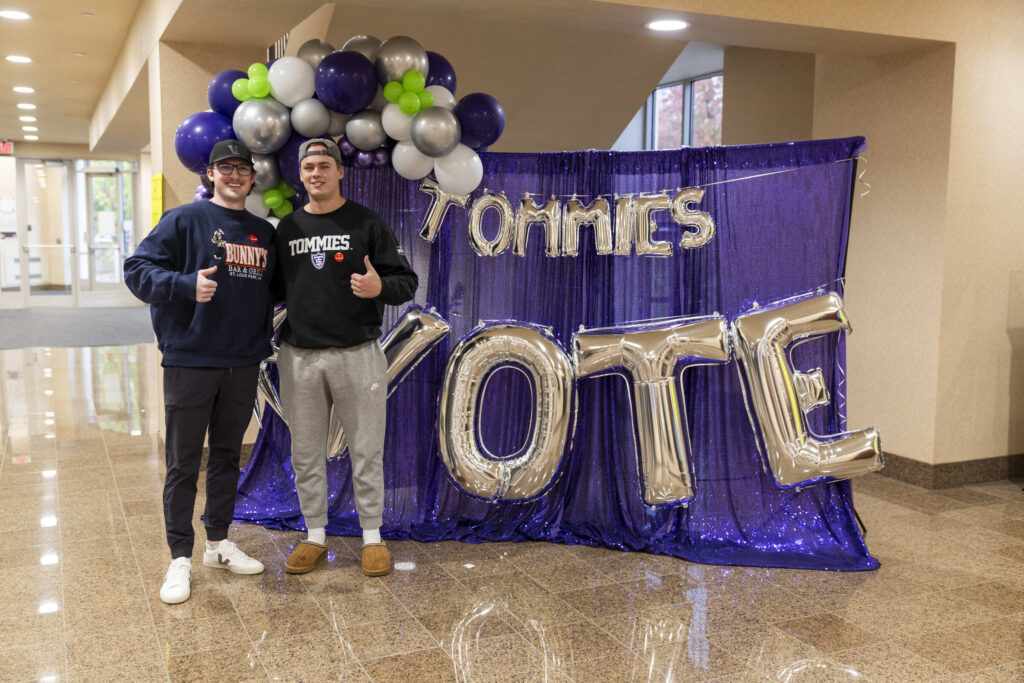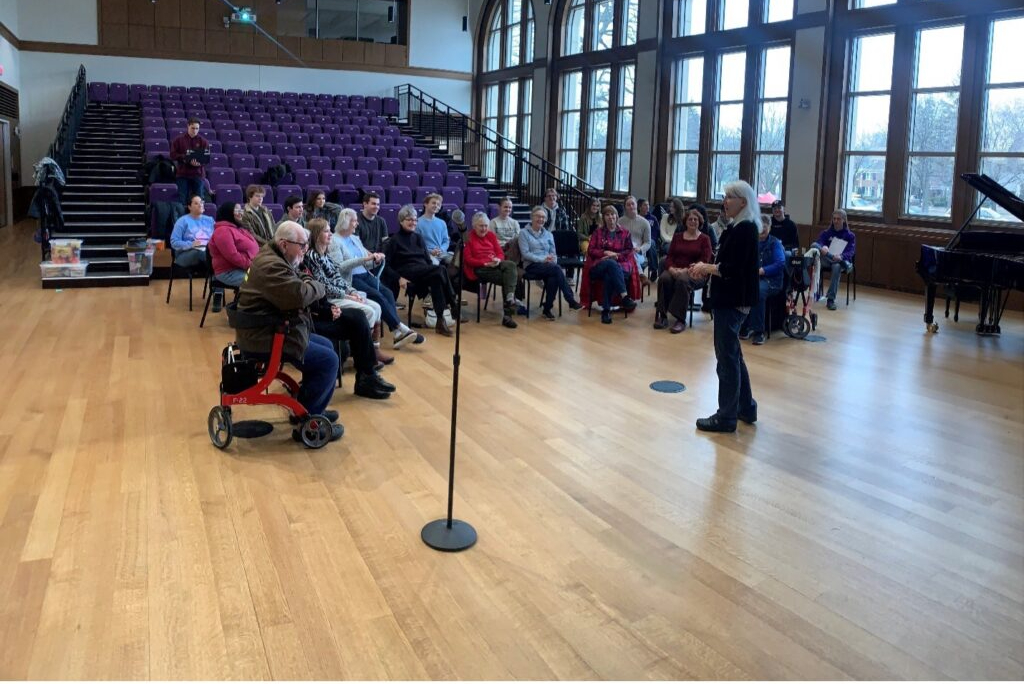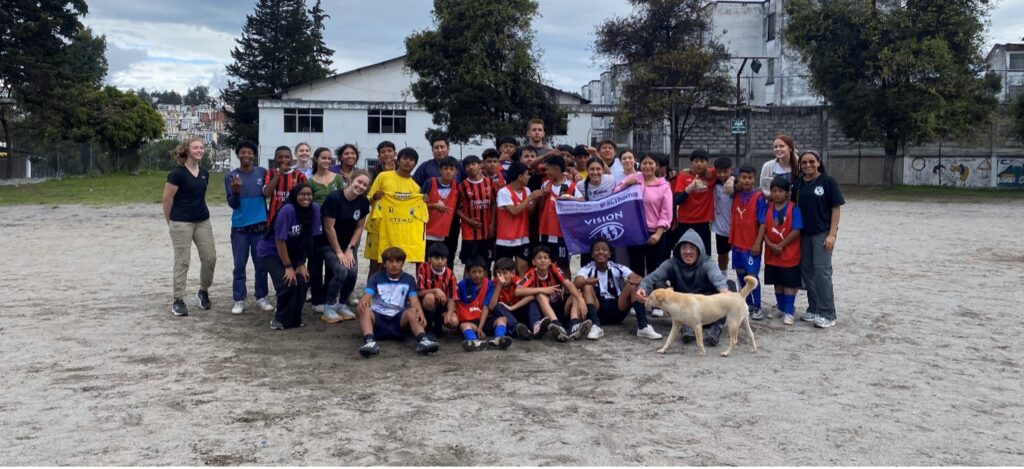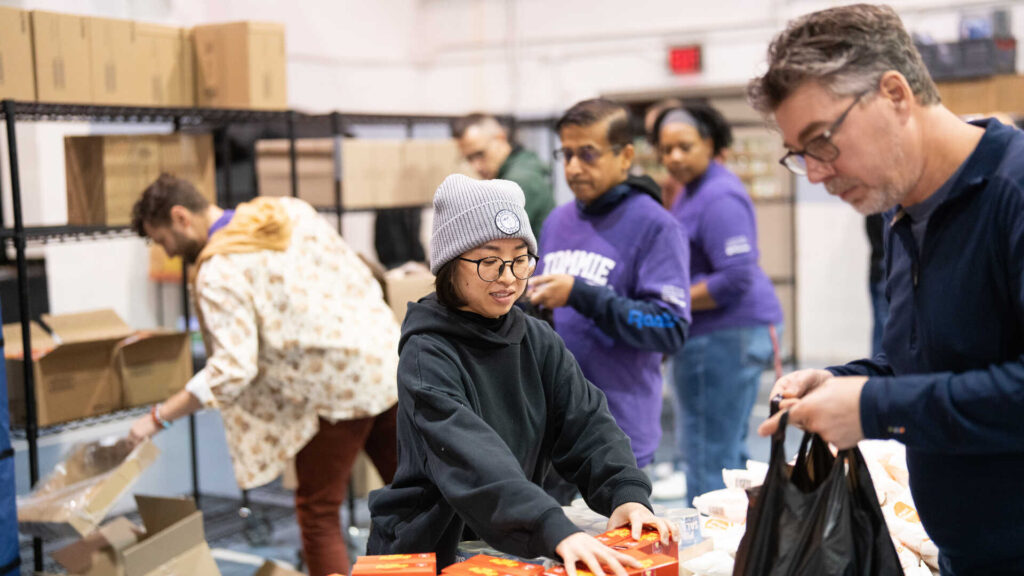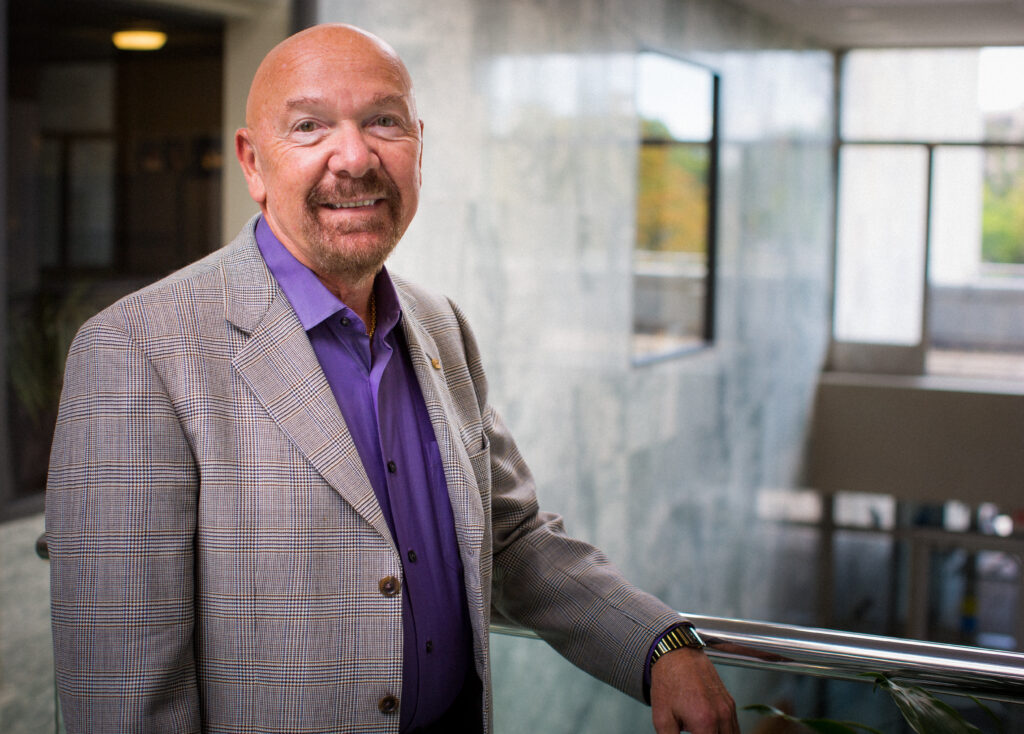Entering the VISION experience in Ecuador, many University of St. Thomas students thought they had a clear understanding of what they were about to encounter. They knew they would visit schools, meet children and families, and participate in volunteer work arranged by The Center: A Family of Families. However, the reality was far more profound. Each day presented a lesson, challenged assumptions, and encouraged these Minnesota-based college students to see the world through a different lens.
Lía Alvarez ‘25 reflected on her experience: “I saw myself in these children. Their curiosity, struggles, and resilience felt so familiar, reminiscent of my own childhood in Cuba,” she said. “In their mothers, I saw my mom, sharing the same worries, exhaustion, and unconditional love. Their homes reminded me of my childhood in Cuba, with sofas covered in blankets, potted plants at the entrance sprinkled with eggshells to help them grow. More than anything, I witnessed a family not just bound by blood but by support, solidarity, and the belief that no one is alone in a strong community.”
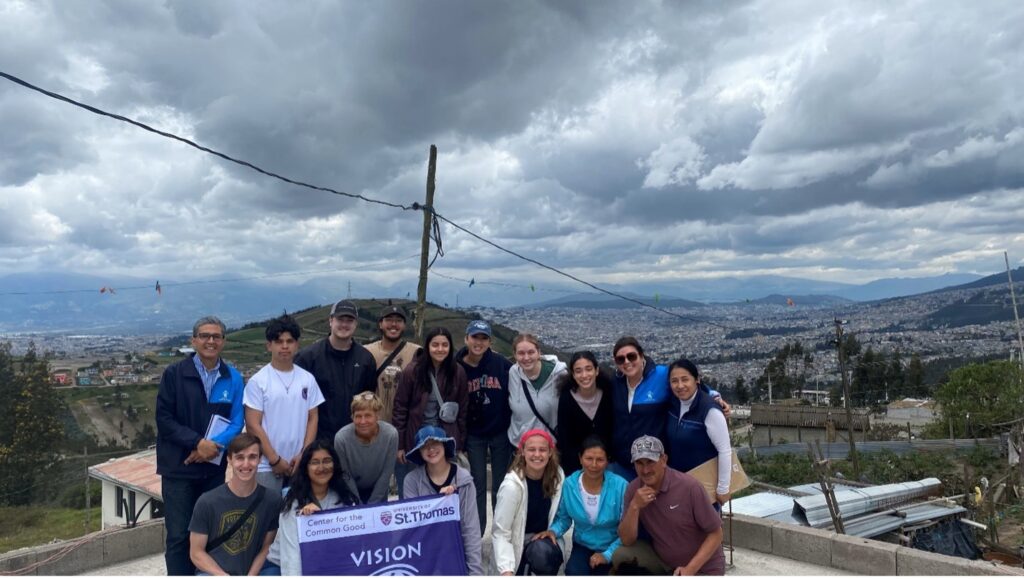
The Center: A Family of Families began 60 years ago when Padre Juan, a young Jesuit in Quito, Ecuador, noticed the large number of children working as shoe shiners in the city. As he built relationships with these children, he came to understand their need to work in order to support their families, given the economic disparities affecting the community. Seeking to restore childhood to these young boys, The Center: A Family of Families was founded by Jesuit priest Father John Halligan, known as Padre Juan in Quito.
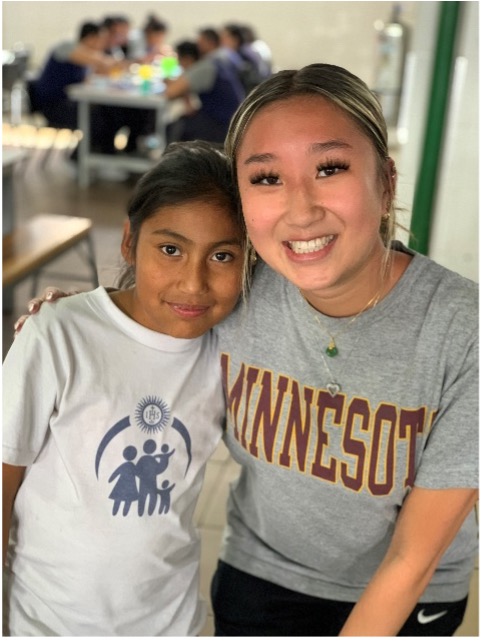
With the generosity of La Compañía, the main Jesuit church in Quito’s city center, he was given space to create a second home for many of these children. Initially, he provided them with meals, but through persistence and donor support, he expanded his efforts. He built beds and play areas, ensuring that, at least for a few hours each day, the children could be children.
Over the past six decades, The Center has grown to provide holistic care for children and their families, offering education, hot meals, health care, legal assistance, ministerial support, and technical training in various fields. These programs are not random; they are designed in response to the evolving needs of the community.
Despite economic hardships, love filled every space. Children’s drawings decorated the walls, family photos were carefully framed, and small altars with candles stood as symbols of hope. Through their stories, the St. Thomas students realized that while poverty is relentless, it cannot erase the essence of home. Each household radiated resilience, proving that true strength is not measured by wealth but by perseverance and the ability to find beauty in adversity.
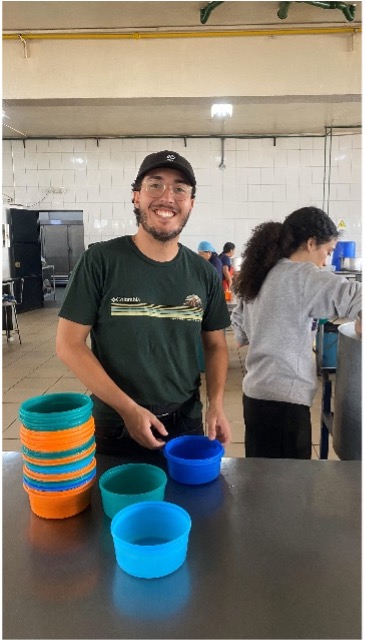
While living in The Center’s compound, VISION participants, a group of 12 Tommies dedicated to fostering the program’s growth through community engagement and daily reflection, were only a short walk from the school, where they shadowed classes and built meaningful relationships with the children.
The students also found moments to embrace childlike joy and connection, such as playing soccer, watching the sunset from the swings, and exploring the city of Quito.
"Spending time with the children in Ecuador reminded me that potential exists everywhere. With the right support, these students can achieve incredible things,” said Felipe Nunez Hilton, one of the student participants. “Their curiosity, resilience, and joy despite challenges inspire me to continue advocating for education that empowers every child, no matter where they are."
Beyond the classroom, the students gained insight into the entrepreneurial lives of The Center's families. Students visited local businesses and saw firsthand how The Center’s programs have helped families attain financial stability.
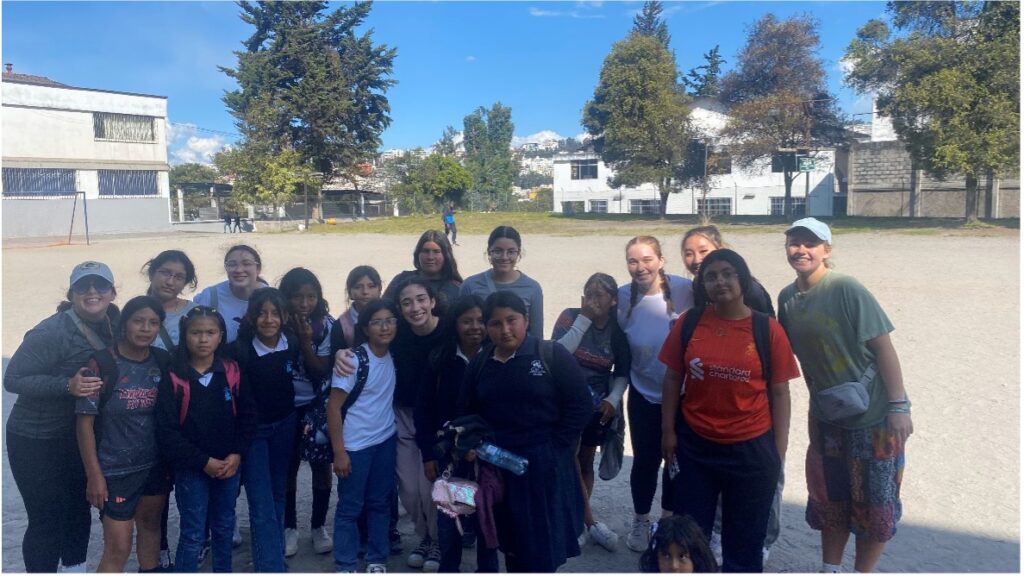
“The Center had several initiatives, such as making clothing from recycled jeans and selling carpentry items," said VISION participant Jennifer Peña Huanga. It was incredible to witness their ability to self-sustain rather than solely rely on grants or donations.”
Another participant, Hapaki Lorenzo Quintana, shared about “la minga,” referencing a project where the students uprooted grass: "In the United States, we often solve problems with money or convenience, but ‘la minga’ changed my mindset. It showed me that solutions come from resilience, teamwork, and the willingness to put in effort. Before this experience, I saw construction as merely a technical task. Here, I realized it is also an act of love and solidarity. Every brick laid and every nail hammered was a step toward someone’s future."
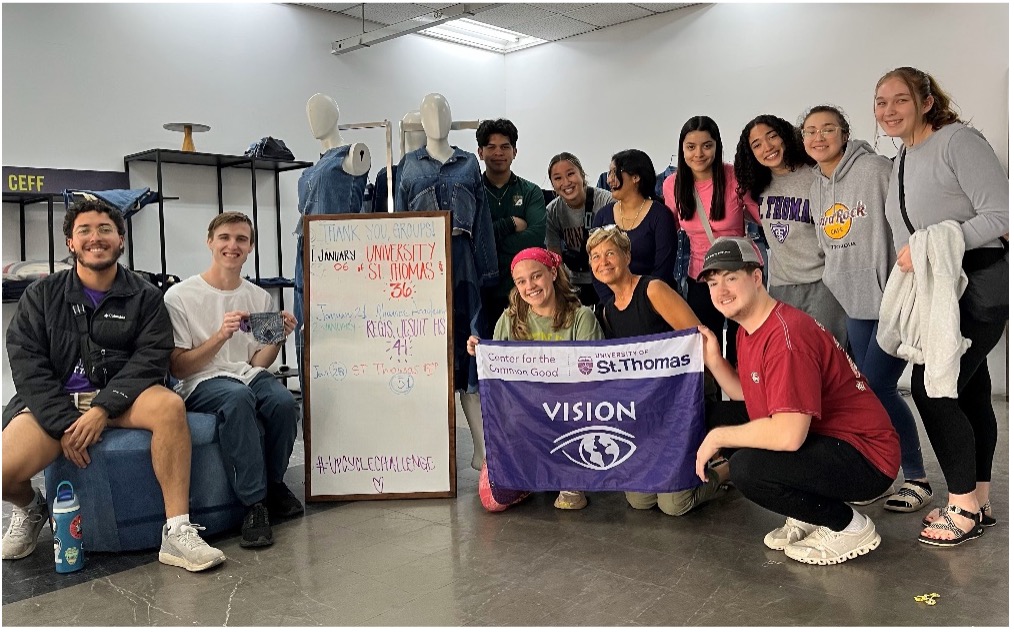
Through these encounters, the students recognized that their journey was not just about volunteering; it was about learning. They learned to listen without judgment, to recognize dignity in every person’s story, and to witness the strength of a community that thrives despite its challenges. More than anything, they discovered that true change does not come simply from giving, but through shared experiences, time, and humanity.
VISION participants left Ecuador knowing that in Quito, they have a home and a family. They will present on April 8 about their experiences in Ecuador, ensuring that these dreams continue to become a reality.
